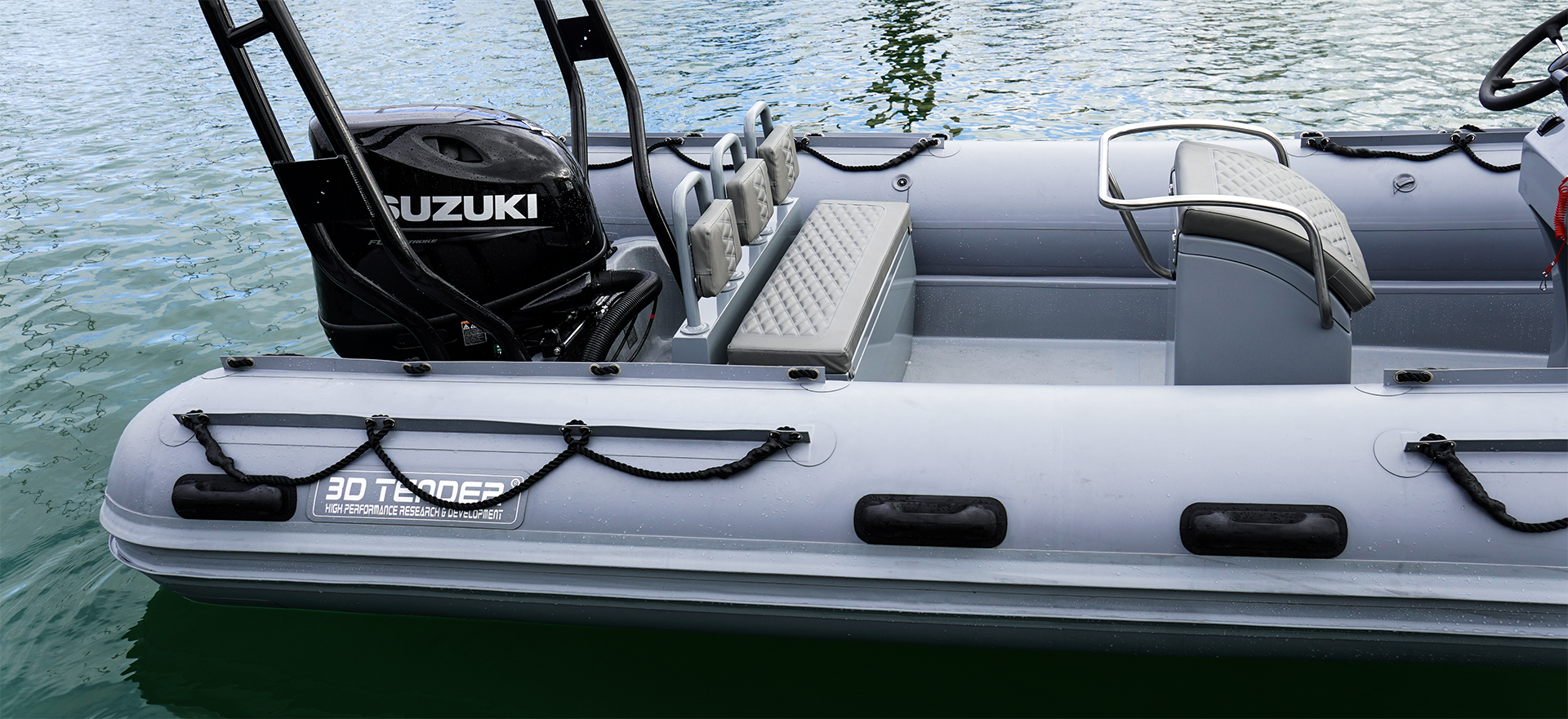
- 05/07/2023
Choosing between hypalon and PVC for your RIB
- To help you make an wise choice for your RIB or tender, we're sharing everything you need to know to make the difference between PCV and hypalon when choosing the fabric for your next boat.
When it comes to choosing your boat, there are many options to choose from, including length, accessories, hull shape and more. But one of the most important choices is the choice of fabric for your RIB or dinghy.
The fabric is used for the floats located on either side of your boat, which guarantee its buoyancy. Their fabric can be either in PVC or in hypalon-neoprene.A matter of price?
As you may have noticed from our catalog, hypalon fabric represents an additional cost. It's a more complex material to produce, but is chosen for its considerable advantages over PVC. That's why it's so widely used in the shipbuilding industry.
Hypalon: a tough material
Unlike PVC, hypalon is a rubber that requires special care when assembling a boat, which must be done by hand when using this material. Unlike PVC, it cannot be heat-welded.
Once in place, hypalon can remain in excellent condition for a very long time, but always with proper maintenance. It's a material that takes its strength from its UV resistance, useful in sunny regions, but also when exposed to the sun for long periods, during anchoring or outdoor storage, for example.
For its resistance, we also recommend hypalon if you're a professional or if you sail very regularly, and your boat is therefore often exposed to weather conditions.However, it's not a magic material that can resist everything. To ensure your boat stands the test of time, it's important to clean your RIB or dinghy and rinse it with fresh water after each use. We recommend our article on dinghy maintenance.

PVC: a tried-and-tested safe bet
PVC is still a widely used material for RIBs and tenders, and will stand the test of time and the weather with proper maintenance. With its light weight, its main advantage is its competitive price, which is sure to tip the balance.
If you systematically take your boat out of the water to store it under cover, PVC will be a good fabric for your boat. PVC is the choice for more occasional use.
And with a cover?
You may be tempted to choose PVC combined with a protective cover, which is supplied on some 3D Tender models. However, it's important to know that a cover doesn't protect against high temperatures, and will sometimes trap this heat inside, to the point of melting the dinghy's glue and loosening its structure.
That's why, in extreme temperature conditions, we recommend hypalon rather than PVC.
Telling the difference
Even among professionals, it's hard to tell the difference between PVC and hypalon! Both visually and to the touch, there's little difference between the two materials. With a keen eye, however, you can see the traces of gluing on hypalon boats.
What materials does 3D Tender mainly use?
3D Tender is supplied by well-known manufacturers in the shipbuilding market, including the German company Mehler®, which produces PVC fabric, and the ORCA® brand by the Belgian company Pennel et Flipo, which produces hypalon fabric. These are the 1st choice producers who have earned the trust of shipbuilders over the years.


